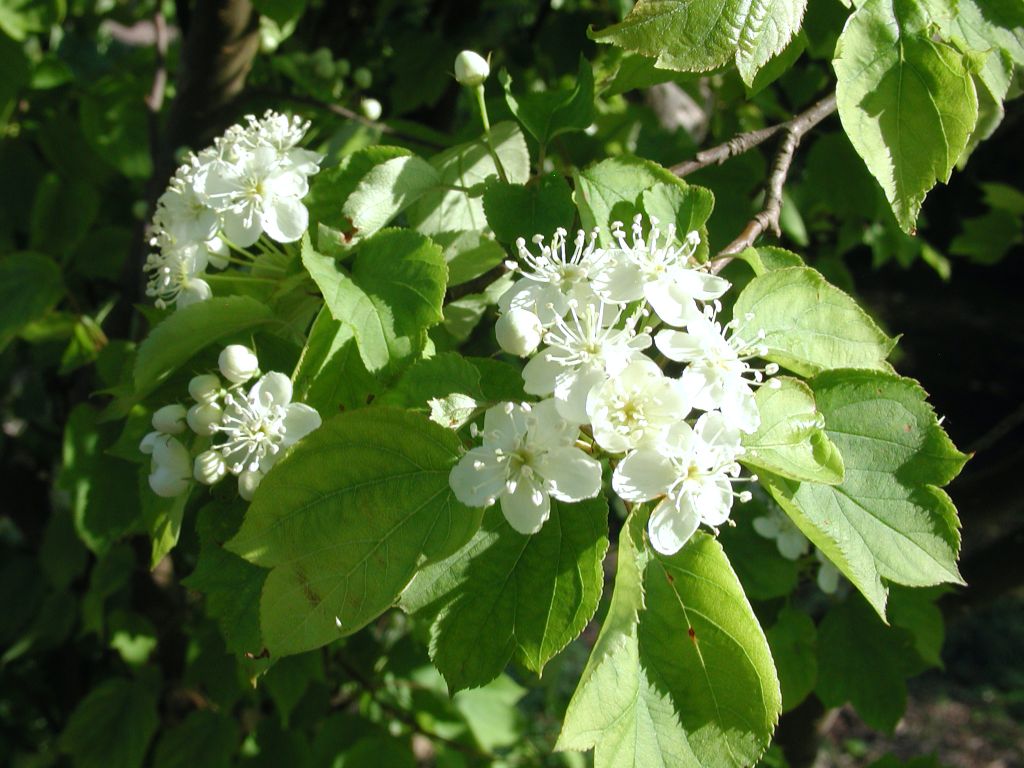#108 KANSU CRABAPPLE
Malus kansuensis subsp. calva

Planted: 1927
View On MapThis tree is near the west end of the Malus Avenue, on the south side.
| Distribution: | Native of central and west China, and eastern Asia. |
| Planting Date: | January 1927, supplied by Hillier Nurseries, Romsey, Hampshire |
| Growth Habit: | Shrub or bushy small tree. Dense twiggy crown. Sometimes armed with stout thorns. |
| Bark: | Young branches smooth grey-brown with lenticels, becoming cracked and peeling with age, revealing russet under-bark. Heartwood is reddish-grey, surrounded by 12 to 30 rings of light reddish sapwood.. |
| Leaf: | Young leaf shoots downy. Leaves ovate in main outline but usually with 3 to 5 pointed lobes. Base rounded or slightly heart shaped. |
| Flowers: | Hawthorn-like flowers, white 1 cm to 2 cm; 4 to 10 on a terminal corymb, 7.5 cm, in May. |
| Fruit: | Oblong to round fruit turning from green to golden, to amber, and ripening to red with pale dots. Edible raw or cooked, but very acidic. |
| Potential tree size: | 8 m |
| Uses: | Good food source for bees and birds. In traditional and conventional medicine , used to stimulate respiration, digestion and promote a feeling of well-being. Claimed by some to be of benefit in the treatment of cancer. Wood is hard but tends to warp. Difficult to split or work but easily stained and polished. Generally too small for commercial purposes but useful for mallet heads, umbrella handles, cogs, wheels, planes and tools. Malus species are generally good for fuel. |
| Plant Hunter: | Ernest Wilson, 1904 expedition for Veitch Nurseries, Exeter, Devon. |
| Introduction Date: | 1910, for the Arnold Arboretum, United States. |